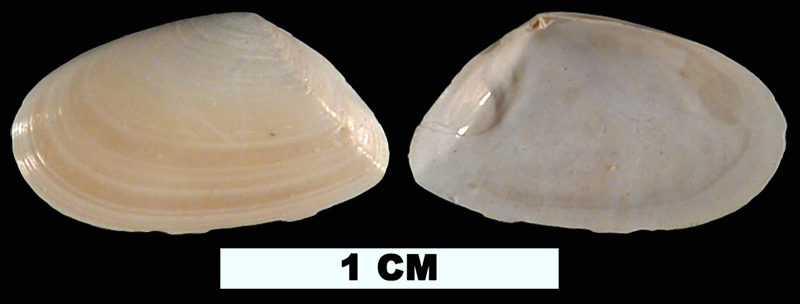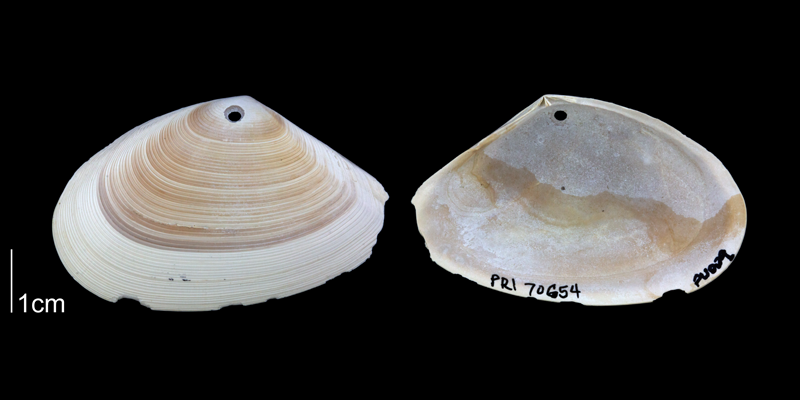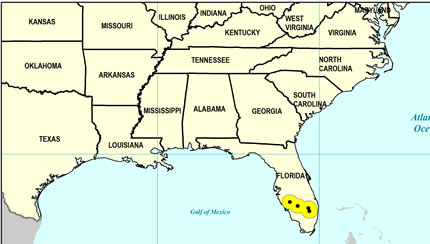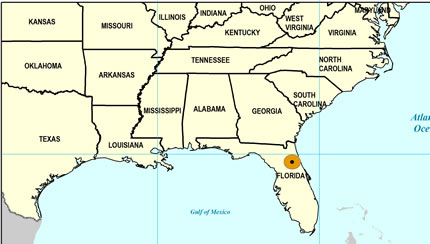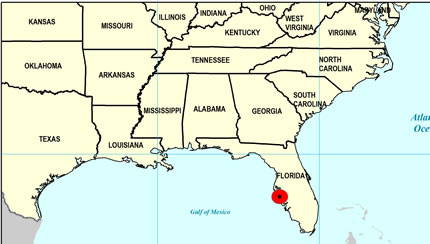
Ameritella versicolor

- Phylum: Mollusca
- Class: Bivalvia
- Order: Imparidentia
- Family: Tellinidae
- Genus: Ameritella
- Species: Ameritella versicolor (Dekay, 1843)
- Common Name: Many-colored tellin
Geological Range
Late Pliocene to Middle Pleistocene; Recent.
Paleogeographic Distribution
Southern Florida to northern Florida.
Remarks
For information on the modern distribution of the species, see Malacolog.
Original Description (from Dekay, 1843, p. 209):
"Description. Shell transverse, compressed, inequilateral, equivalve, slightly gaping at its subacute extremity. Incremental striae evident, but not laminae, and no radiating striae: the posterior end subangular, with an indistinct fold; anterior extremity dilated and rounded. Cardinal teeth two in the right valve; the posterior more robust, simple: in the left valve, rudimentary or inconspicuous.
Color. Polished, opalescent, white, with a distinct purple and bluish iridescence, often strongly radiated, enlarging towards the margins.
Vertical axis, 0*4; transverse ditto, 0*65. Diameter, 0*2.
This shell, which is of extreme beauty, and often very brilliant, was first detected by Mr. I. Cozzens on the shores of the Hudson at Glass-house point, a few miles above the city. In its comparative proportions, teeth and color, it varies distinctly from T. sordida, with which it is otherwise allied. It resembles very much the description of T. iris, except in wanting the oblique striae; but I have had no opportunity of making a direct comparison of the shells."
To access this description in its original formatting through the Biodiversity Heritage Library, click here.
Stratigraphic Occurrences
- Middle Pleistocene
- Bermont Formation (S. FL)
- Early Pleistocene
- Nashua Formation (N. FL)
- Late Pliocene
- Tamiami Formation (Pinecrest Beds) (S. FL)
